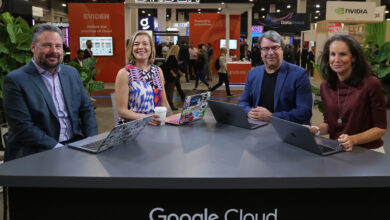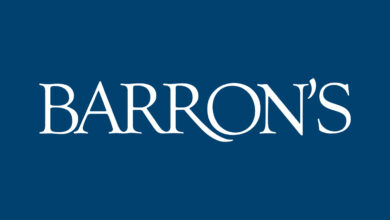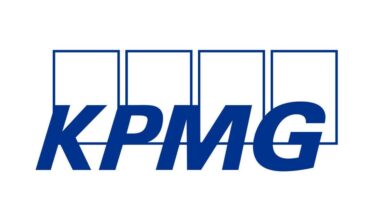Optimizing creative workflows with generative AI: A guide for teams

Generative AI tools are being used across the industry to boost creative elements and take on routine tasks in digital ad design. Many savvy designers employ these tools daily, but only a few truly operationalize them. Have you considered how you might standardize the usage of AI tools across your team? How dramatically could you boost efficiency?
While AI tools can transform many aspects of the creative process, integrating them effectively involves a strategic, phased approach that drives both productivity and the quality of creative outputs.
With the right processes — and, more importantly, the right culture — in place, your team could become measurably more effective and productive.
Here’s the approach that SparkLabs, AppLovin’s in-house creative agency, took to operationalize AI tools. As a team, we’re responsible for creating tens of thousands of high-impact, interactive performance ads each year — ads that deliver high returns. By incorporating AI tools into workflows, not only were we able to deliver on our goals, we ultimately saved 1,600 hours in less than a year.
Phase 1: Exploration and initial testing
The journey to integrating AI into creative workflows begins with exploration. For any team, curiosity about the capabilities of new generative AI tools is a natural starting point, and testing popular platforms for text, image and video could uncover potential applications in your team’s workflows. Specifically, these tools will likely reduce hours spent on mundane, repetitive tasks such as background removal and motion tracking.
For SparkLabs, this phase revealed a lot about the current state of AI tools, as well as how some designers were already using them. One thing we noted right away was the possibilities AI tools represented for our pre-production work.
Some of our early adopters formed a dedicated task force to explore over 50 AI tools, focusing on how these could be relevant to our work. Experimenting first with ChatGPT to help with ideation and script-writing, and Midjourney to help with visual concepting and storyboarding, the team could already see the many ways AI would help save time and resources.
Ultimately, this initial phase should focus on gaining a high-level understanding of AI — what’s revolutionary about “generative” AI, where it’s being applied and what’s on the horizon.
Phase 2: From experimentation to practical application
Once your team is familiar with AI tools’ basic functionalities, the next step is to test them in real-world scenarios. Create projects that explicitly leverage AI capabilities and observe how these tools can enhance or streamline production processes.
In Phase 1, we used AI tools to help with tasks that we could do manually, whereas in Phase 2, we wanted to explore new possibilities and produce creatives that wouldn’t have been possible without AI.
During this stage, it’s crucial to document the lessons learned and share these insights across the team. Encourage everyone to continue experimenting and schedule time to discuss what’s been learned; what’s worked and what hasn’t. This collaborative approach will help you refine the integration process, ensuring that productivity gains from AI are maximized and that you don’t hit a plateau, as many teams do.
SparkLabs wasn’t immune to that plateau, but we fought through it and learned valuable strategic lessons along the way.
We learned that success stories speak louder than words, so foster open discussions with your entire team. Instead of pushing everyone to learn AI by forcing them into your preferred processes, have early adopters share success stories about personal advantages they gained from AI. This will motivate the wider team to explore organically while team managers give the space and resources to do so.
An important aspect of this phase is being adaptive. Your team should be prepared for rapid changes as AI tools evolve. There might be frustrations: Often, you’ll spend extensive time learning a tool only to find it’s been significantly updated shortly after. We’ll often joke about spending 10 hours learning how to do something with AI that you could do manually in 10 minutes, only to see the tool get a complete revamp after 10 days.
Rather than being discouraged, remember that the priority in this fast-developing AI landscape should be understanding AI’s value and potential, not mastering any one tool.
Phase 3: Cultivating a culture of continuous learning
The final phase may be the most critical: developing a sustainable culture of continuous learning. As generative AI technologies evolve, we realized that our team would need to adapt in lockstep. Keep an open mind about new tools and capabilities that may become available, and integrate continuous learning into your team’s daily routines.
The most important thing is just to start. Tools are evolving rapidly, and new ones are constantly being introduced. Don’t wait for things to calm down: Dive in now and just start learning. The good news is that the technologies are only getting easier to use.
Based on our experiences, here are four tips that can help you effectively and sustainably incorporate AI tools into your workflows:
- Continue exploring AI’s capabilities: Stay informed about new tools and advancements, and continue to generate ideas for optimizing workflows.
- Focus on specific use cases: Identify particular challenges within your workflow that can be made more efficient with AI tools.
- Understand AI’s role: While AI can enhance certain aspects of creativity, it can’t fully substitute human insight. Use it to make your processes more efficient and have human contributors focus on where they can add value over AI.
- Practice responsible usage: Always consider the ethical and legal implications of using AI, especially regarding copyright and data privacy.
A final lesson in this last phase: Using AI in the production process does not always lead to more success when it comes to performance. That’s another reason why we still need humans — to understand and connect with the audience and devise the creative strategy behind ad production.
Collaboration is key to unlocking AI’s full potential. Working together, your creative team can use AI to unlock new creative possibilities and ultimately elevate the quality and impact of the work it delivers.
Jessica Dolan is the creative director of SparkLabs, AppLovin’s in-house ad creative team. With a background in animation and a passion for design, Dolan leads the team’s creative strategy and production, delivering top-quality innovative ads for AppLovin’s clients.
Mike Cruz is director of creative operations at AppLovin, where he co-leads the SparkLabs team. With over 10 years of experience in performance marketing, Cruz has contributed to the creative launches of several high-profile mobile app titles. In his spare time, Cruz enjoys collecting original comic art, which inspires his creativity and appreciation for storytelling and design.
Jaden Cheng is a senior business analyst at SparkLabs. As a primary contributor to AppLovin’s Performance-Driven Ad Trends reports, Cheng has developed innovative, data-driven strategies that have significantly enhanced campaign performance. In just over two years at AppLovin, Cheng has generated impactful creative insights for dozens of apps, showcasing a keen understanding of the mobile advertising landscape.



